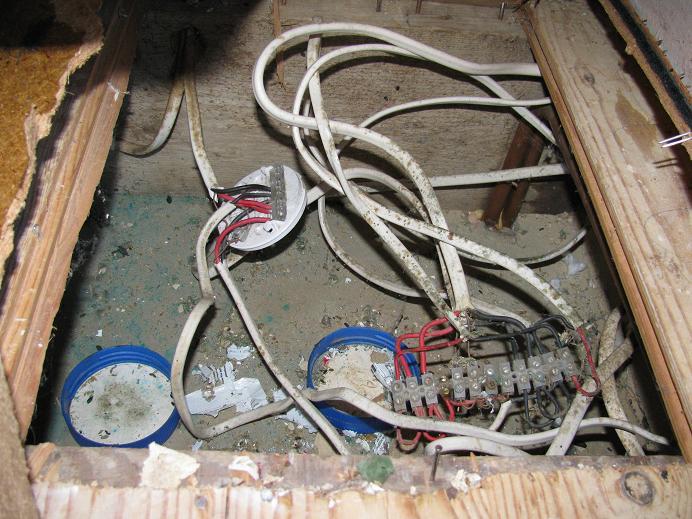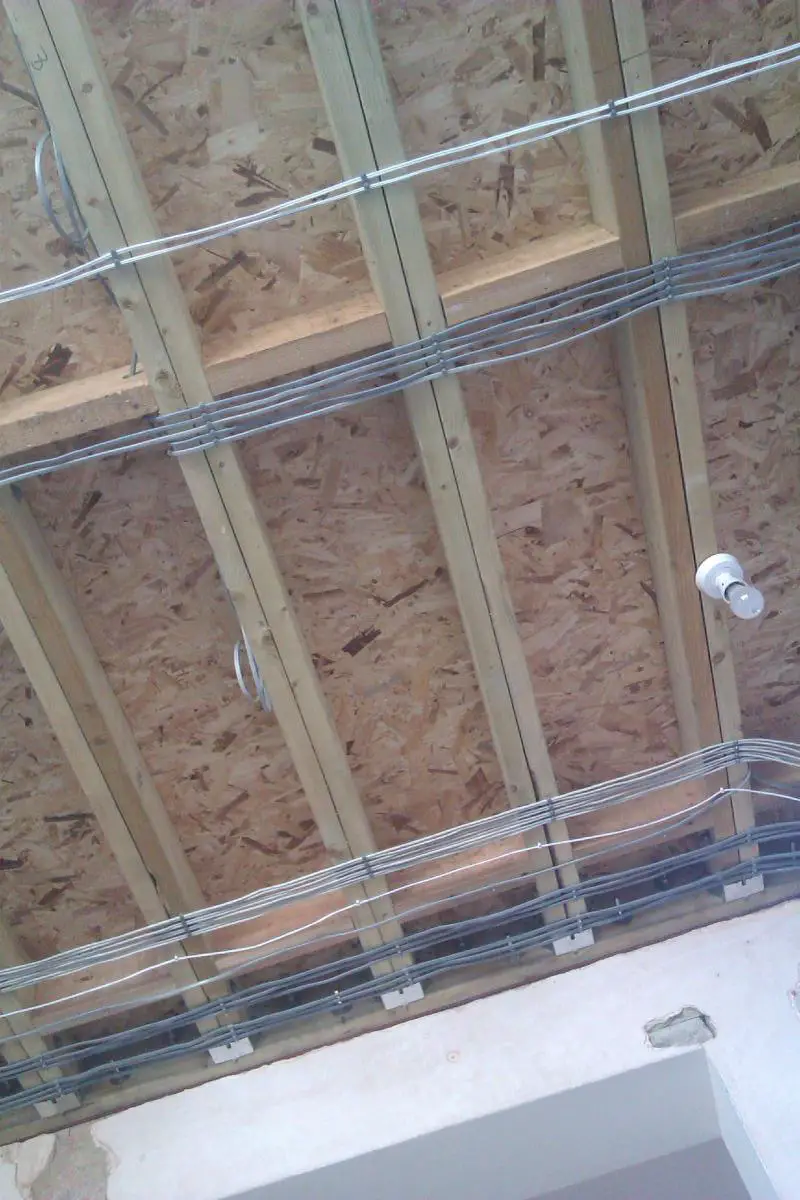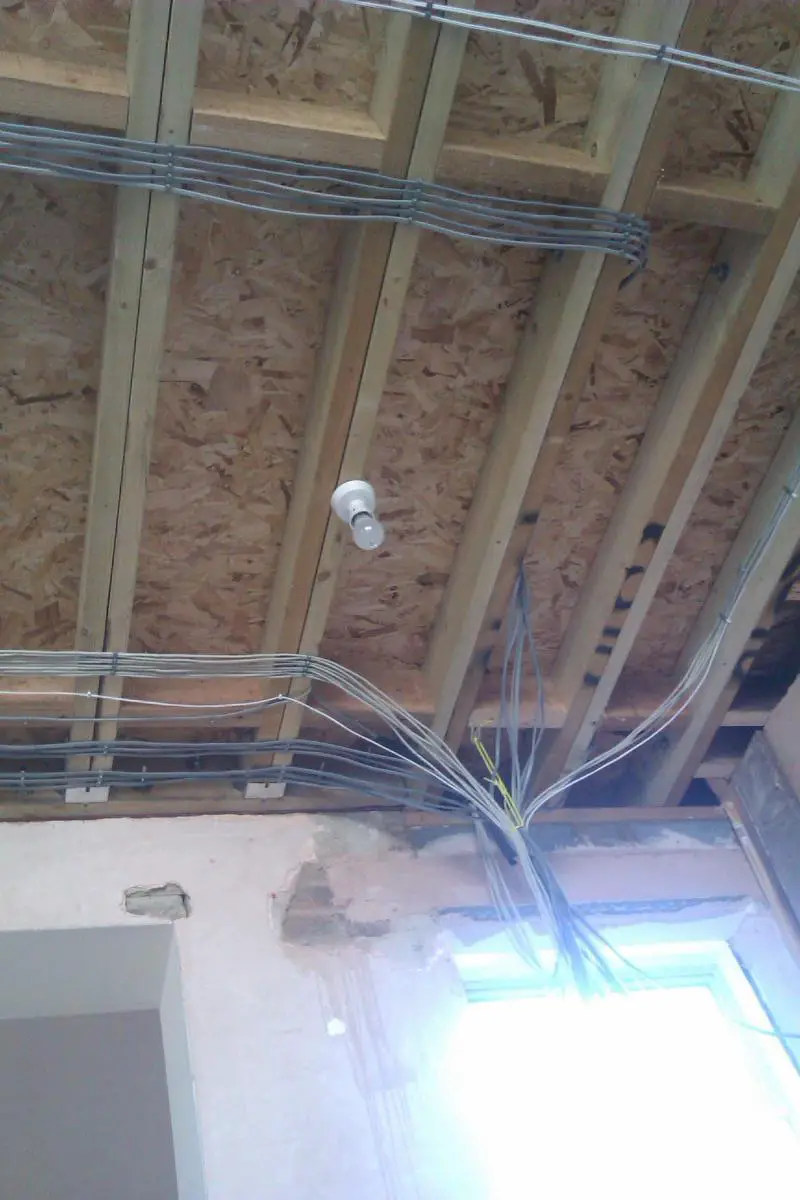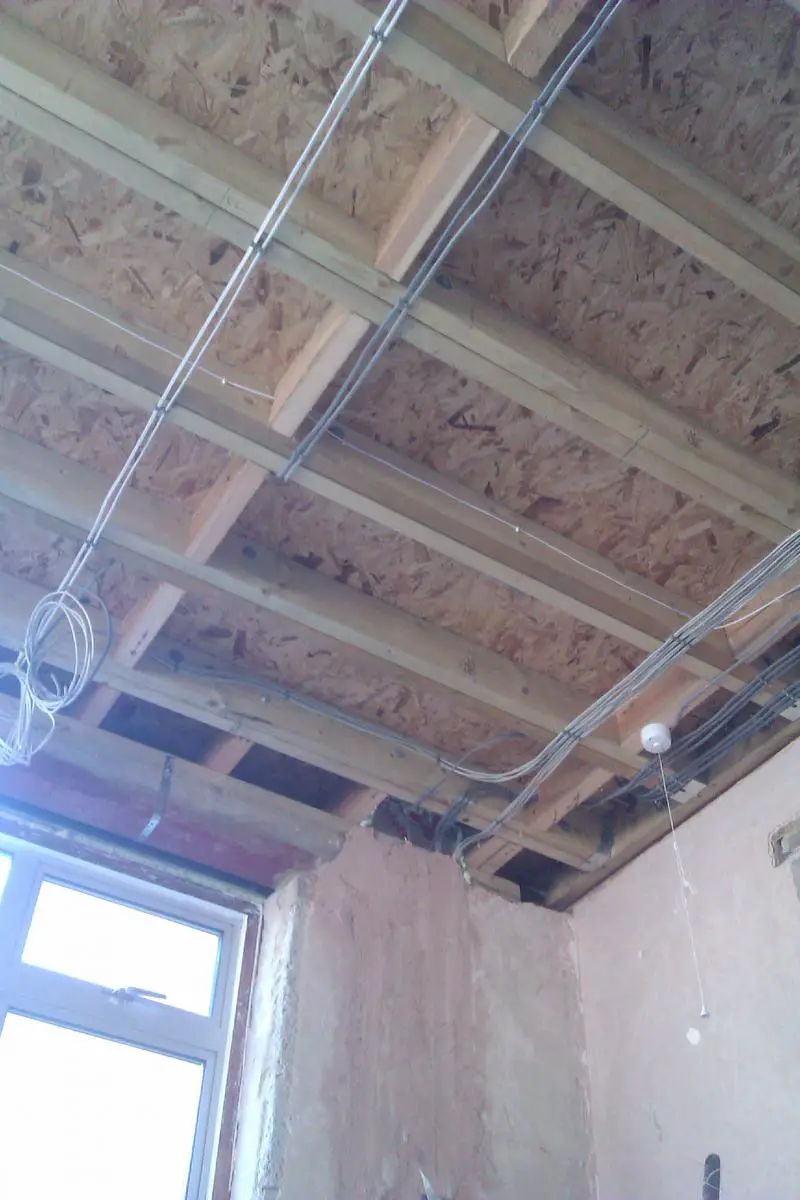This whole 'did it all' thing is a pain, and just plain daft. Where is the limit.
If a spark sees you've run a cable from point A to point B, and can see all of it. To correctly 'do it all himself'. He would have to remove it, and then replace it exactly as it was before. Providing 100% observations can be made of the install, there is no difference between a spark hammering clips in and cutting cable, or the home owner (Apart from the litigious nature of our country).
Similar to when I had the gas done. I cut and dry fitted the whole lot, then had a gas engineer solder it up and commission it. Yet it's signed as his install.
Allowances MUST be made for common sense, else we will grind to a halt where you won't be allowed to do anything yourself... Rant over.
But in the exact case of your question, I guess so.
One piece of conduit per accessory box. No pass throughs. All run as spurs to a common distribution point.
It is a warm deck flat roof with 120mm rigid foam insulation, 2 layers of 18mm OSB3 inc. a VCL. Topped with EPDM and bird cr*p. All new, and a damn site better than what was there.
Are you trying to find holes in my work Sheds?

Fubar.







